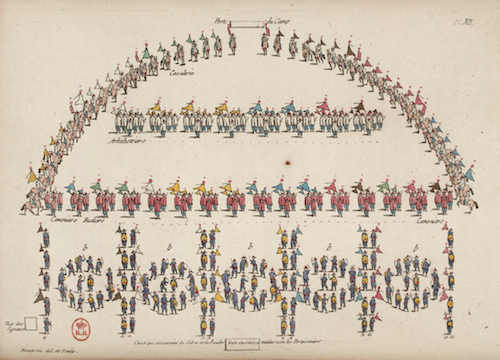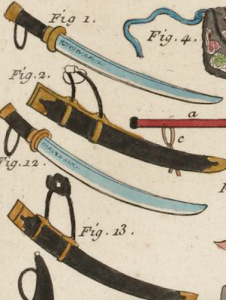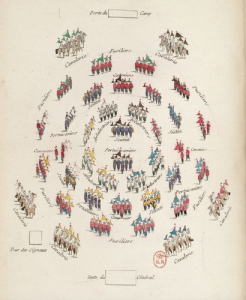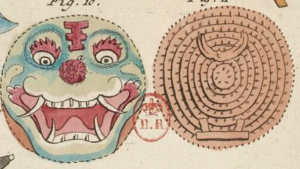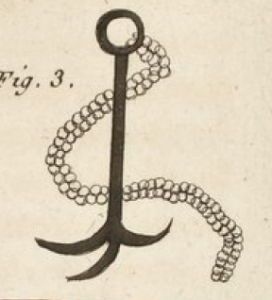Instructor Crofton Black recounts the trials and tribulations experienced by an early translator of the Art of War
Classics are shaped by successive ages in their own image: they endure despite, or because of this. The Art of War, attributed to Sun Tzu, is one such. It has been called the most “profound, comprehensive and transcendent” of all strategic works. It is concise, dense, structured around deceptively simple principles and overflowing with striking metaphors and analogies. This opens it up to a multiplicity of interpretations. In the last century, translated into English, it has been read as a way of understanding and defeating the Japanese military in World War II; as a post-911 manual for counter-insurgency; and as an instruction book for successful business management – to name only a few of the guises in which it has appeared. The Chinese, too, read it in different ways – and in different languages. Here we look at one lesser-known version of it, and ask what it meant to translate the Art of War in the eighteenth century, Europe’s famous Age of Enlightenment, just before the rise of Napoleon.
In the summer of 1751, the Jesuit missionary Joseph Amiot was stuck in a boat, trying to avoid the blazing sun as he awaited completion of the bureaucratic formalities which would grant him passage from Canton to Peking. There, he would join a group of French priests attached to the imperial court of the Qianlong emperor. It was quite some way from his native Toulon.
Amiot was one of several hundred Jesuits who made the arduous voyage to China in the seventeenth and eighteenth centuries. Although partly there to proselytise, they also acted as scientific advisors and intermediaries, forming a bridge across which knowledge travelled both eastwards and westwards. One of these religious scholars was a mathematician. Another spent five years building an extravagant water clock, with jets, singing birds and moving figures. Amiot himself performed astronomical calculations and, it is said, constructed a pair of mechanical men carrying vases of flowers for the emperor. He also collected books and communicated their contents back to France.
His collection of reading matter and correspondence eventually formed the basis of a gigantic compilation, the “Mémoires concernant les Chinois” published between 1776 and 1814. But almost a decade before this vast enterprise was in motion Amiot had already been responsible for a somewhat surprising publication: the first European translation of Sun Tzu’s Art of War.
The date of composition of Sun Tzu’s text is unknown. But by Amiot’s time, it had been in existence for some two millennia. It had acquired layers of commentary over the centuries, including some by Cao Cao, notorious warlord and celebrated literary figure of the three kingdoms era. It was, as Amiot said, a classic – “a chef d’oeuvre, a true model and a summary of everything that could be said on the warrior’s art.”
Amiot’s work was sponsored by Henri Bertin, a treasury official and former head of police in Paris (said to have foiled a plot to assassinate King Louis XV using a poisoned bouquet). Bertin had come up with a financial scheme to pay for the Seven Years War, a pan-European (and colonial) conflict which saw Britain pitted against France and Austria against Prussia. France had done badly in the war, and Bertin had resigned his position to dedicate himself to more scholarly pursuits.
Translating the Art of War, Amiot wrote, was an undertaking “contrary to my taste and far removed from my profession.” But it was nonetheless one which he hoped would be “useful”, and he had been spurred on by his belief that there was a demand in France for knowledge about the Chinese military. His professed distaste for military matters should perhaps not be taken at face value. The Jesuits were, in fact, quite heavily involved in the Chinese military at the time, helping the Manchu rulers through intelligence – mapping, in particular – and through the manufacture of cannons and munitions. Amiot had also tried to interest the emperor in the technology of the hot air balloon, then much in vogue in France, but his enthusiasm did not catch on.
Although known for its rigorous suppression of earlier Chinese literature, the Qing dynasty had also sought to ensure transmission of some literary works. The Art of War was translated from Chinese into the Manchu language at the start of the eighteenth century, in the reign of the Kangxi emperor. It is this translation which helped Amiot make his own version.
The Jesuits struggled with learning Chinese. One of Amiot’s contemporaries likened his slow progress in the language to hauling a plough. Amiot himself confessed that, when he came to study the Art of War, the language often baffled him. Faced with the “compression, obscurity and difficulty” of the Chinese text he abandoned the enterprise a hundred times, and had ultimately given up when suddenly a way forward was revealed to him.
Like any self-respecting early modern scholar Amiot employed a book scout, who alerted him to some rare volumes which had come on sale: they were the property of some Manchu noblemen who had fallen out of favour with the emperor and whose personal effects were therefore being disposed of. Among these books was a manuscript containing the classic works on warfare with commentary. Importantly for Amiot, they had been translated from Chinese into the Manchu language.
This meant that he was able to prepare his translation by cross-referencing the Chinese and Manchu versions of the text, using the clarity of one to illuminate the obscurity of the other. He also consulted experts, but this was a less successful route, as he discovered: “Often, despite their long explanations and supposed clarifications, I ended up none the wiser.”
Of the Chinese language, Amiot wrote, “The characters are like beautiful paintings in which most people, uneducated or with incomplete knowledge, see only the approximation of what is represented or a fraction of the beauties contained within, while a true connoisseur perceives everything that the artist wanted to express.”
Amiot perceived that the Chinese language combined many levels of meaning in one image, and complained that while authors could make use of this to express many ideas at once, readers were left in the dark, grasping only a fraction of the possible content.
Even in the simpler Manchu language, difficulties still existed: although Amiot thought it was “methodical like our European languages”, the tendency of Manchu scholars to translate literally meant that obscure Chinese expressions were frequently just replaced by equally obscure Manchu ones. Amiot himself preferred not to translate literally, but instead to “give an idea of how ancient authors spoke about war … illuminating their ideas when they were enveloped in the shadows of metaphor and enigma.”
Sometimes he admitted that he hadn’t managed to penetrate Sun Tzu’s thought. Chapter 6 – “The full and the empty” – puzzled him. “I don’t see how the title of the chapter relates to what’s written in it,” he complained.
What did French readers of the eighteenth century make of it? We have some idea, because two scholar-soldiers, Colonel de St Leu de St Maurice and the Marquis de Puy-Ségur, wrote a brief commentary on Amiot’s work just after it came out. The second half of the century, between the Seven Years War and the French Revolution, saw a dramatic rise in interest in military thought in Europe; French, German and English authors debated strategy and tactics, formation, manoeuvres and logistics, in a tide of literary output which led eventually to the monumental study of Clausewitz.
Indications are that these readers struggled with Sun Tzu’s metaphorical and multi-layered approach. Discussing Sun Tzu’s remarks on the flow of water – a major theme in the chapter on “The full and the empty” – the Colonel de St Leu eventually cut the Gordian knot: all that he could gather from this crowd of aphorisms was that the Chinese march in lines, and that as the terrain changes the distribution of the lines changes with it. The interpretation is a perfect illustration of Amiot’s concerns about translating the work in the first place: the uninitiated mind perceives only one aspect of the whole. The Colonel himself seems to have sensed this: seeking a comparison to convey the character of Sun Tzu’s style, he chose not the principal French military theorists of the time, but the essayist Michel de Montaigne – whose prose flows like water rather than being arrayed in lines.
All illustrations are taken from: Bibliothèque nationale de France RES-V-1684 (Art militaire des Chinois, ou Recueil d’anciens traités sur la guerre composés avant l’ere chrétienne, par différents généraux chinois… Traduit en francois, par le P. Amiot, Paris 1772)
